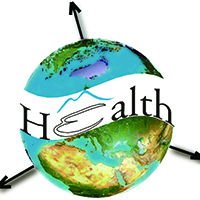Spatio-temporal analysis of leptospirosis in Brazil and its relationship with flooding

Submitted: 29 June 2022
Accepted: 17 August 2022
Published: 29 November 2022
Accepted: 17 August 2022
Abstract Views: 1034
PDF: 759
HTML: 68
HTML: 68
Publisher's note
All claims expressed in this article are solely those of the authors and do not necessarily represent those of their affiliated organizations, or those of the publisher, the editors and the reviewers. Any product that may be evaluated in this article or claim that may be made by its manufacturer is not guaranteed or endorsed by the publisher.
All claims expressed in this article are solely those of the authors and do not necessarily represent those of their affiliated organizations, or those of the publisher, the editors and the reviewers. Any product that may be evaluated in this article or claim that may be made by its manufacturer is not guaranteed or endorsed by the publisher.
Similar Articles
- Carlos Mena, Cesar Sepúlveda, Eduardo Fuentes, Yony Ormazábal, Iván Palomo, Spatial analysis for the epidemiological study of cardiovascular diseases: A systematic literature search , Geospatial Health: Vol. 13 No. 1 (2018)
- Amanda Gabriela de Carvalho, João Gabriel Guimarães Luz, João Victor Leite Dias, Anuj Tiwari, Peter Steinmann, Eliane Ignotti, Hyperendemicity, heterogeneity and spatial overlap of leprosy and cutaneous leishmaniasis in the southern Amazon region of Brazil , Geospatial Health: Vol. 15 No. 2 (2020)
- Rita Roquette, Marco Painho, Baltazar Nunes, Spatial epidemiology of cancer: a review of data sources, methods and risk factors , Geospatial Health: Vol. 12 No. 1 (2017)
- Marcus Matheus Quadros Santos, Bianca Alessandra Gomes do Carmo, Taymara Barbosa Rodrigues, Bruna Rafaela Leite Dias, Cleyton Abreu Martins, Glenda Roberta Oliveira Naiff Ferreira, Andressa Tavares Parente, Cíntia Yollete Urbano Pauxis Aben-Atha, Sandra Helena Isse Polaro, Eliã Pinheiro Botelho, Spatial variability of mother-to-child human immunodeficiency virus transmission in a province in the Brazilian Rainforest: An ecological study , Geospatial Health: Vol. 17 No. 2 (2022)
- Shuaicheng Chen, Spatial and temporal dynamic analysis of rabies: A review of current methodologies , Geospatial Health: Vol. 17 No. 2 (2022)
- Ricardo Ramìrez-Aldana , Juan Carlos Gomez-Verjan, Omar Yaxmehen Bello-Chavolla , Lizbeth Naranjo, A spatio-temporal study of state-wide case-fatality risks during the first wave of the COVID-19 pandemic in Mexico , Geospatial Health: Vol. 17 No. s1 (2022): Special issue on COVID-19
You may also start an advanced similarity search for this article.

 https://doi.org/10.4081/gh.2022.1128
https://doi.org/10.4081/gh.2022.1128







